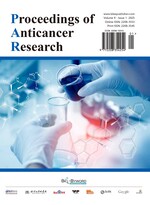Abstract
Objective: To evaluate the use of infrared thermography technology for objective and quantitative syndrome differentiation and treatment in traditional Chinese medicine (TCM), specifically in patients with Chaihu Guizhi Ganjiang Decoction syndrome. Methods: Data were collected from over 100 patients diagnosed with Chaihu Guizhi Ganjiang Decoction syndrome at Professor Li Leyu’s endocrinology clinic, Zhongshan Hospital of Traditional Chinese Medicine, Guangdong Province, between April 2021 and April 2022. Body surface temperature data were obtained using the MTI-EXPRO-2013-B infrared thermography system. Principal component analysis (PCA) was applied to differentiate temperature distribution characteristics between genders, and a neural network prediction model was constructed for syndrome diagnosis. Results: Infrared thermography effectively captured surface temperature characteristics of patients with Chaihu Guizhi Ganjiang Decoction syndrome. PCA identified one principal component with a variance explanation rate of 73.953% for females and two principal components with a cumulative variance explanation rate of 77.627% for males. The neural network model demonstrated high predictive performance, with an area under the ROC curve of 0.9743 for the training set and 0.9889 for the validation set. Sensitivity was 1, specificity 0.8636, precision 0.8846, accuracy 0.9333, and the F1 score 0.9388. Conclusion: Infrared thermography provides an innovative, objective, and quantitative method for syndrome differentiation and treatment in TCM. It represents a significant advancement in transitioning from traditional empirical approaches to modern, visualized, and precise diagnosis and treatment. This study underscores the potential of integrating advanced technologies in TCM for enhanced clinical application and modernization.
References
Ring EF, Ammer K, 2012, Infrared Thermal Imaging in Medicine. Physiol Meas, 33(3): R33–46. https://doi.org/10.1088/0967-3334/33/3/R33
Arora N, Martins D, Ruggerio D, et al., 2008, Effectiveness of a Noninvasive Digital Infrared Thermal Imaging System in the Detection of Breast Cancer. Am J Surg, 196(4): 523–526. https://doi.org/10.1016/j.amjsurg.2008.06.015
Planinsic G, 2011, Infrared Thermal Imaging: Fundamentals, Research and Applications. European Journal of Physics, 32(5): 1431. https://doi.org/10.1088/0143-0807/32/5/B01
Herry CL, Frize M, 2004, Quantitative Assessment of Pain-Related Thermal Dysfunction Through Clinical Digital Infrared Thermal Imaging. Biomed Eng Online, 3(1): 19. https://doi.org/10.1186/1475-925X-3-19
Yang HQ, Xie SS, Hu XL, et al., 2007, Appearance of Human Meridian-Like Structure and Acupoints and Its Time Correlation by Infrared Thermal Imaging. Am J Chin Med, 35(2): 231–240. https://doi.org/10.1142/S0192415X07004771
Sivanandam S, Anburajan M, Venkatraman B, et al., 2012, Medical Thermography: A Diagnostic Approach for Type 2 Diabetes Based on Non-Contact Infrared Thermal Imaging. Endocrine, 42(2): 343–351. https://doi.org/10.1007/s12020-012-9645-8
Bagavathiappan S, Philip J, Jayakumar T, et al., 2010, Correlation Between Plantar Foot Temperature and Diabetic Neuropathy: A Case Study by Using an Infrared Thermal Imaging Technique. J Diabetes Sci Technol, 4(6): 1386–1392. https://doi.org/10.1177/193229681000400613
Deng F, Tang Q, Zheng Y, et al., 2012, Infrared Thermal Imaging as a Novel Evaluation Method for Deep Vein Thrombosis in Lower Limbs. Med Phys, 39(12): 7224–7231. https://doi.org/10.1118/1.4764485
Kang J, Lee N, Ahn Y, et al., 2013, Study on Improving Blood Flow with Korean Red Ginseng Substances Using Digital Infrared Thermal Imaging and Doppler Sonography: Randomized, Double Blind, Placebo-Controlled Clinical Trial with Parallel Design. J Tradit Chin Med, 33(1): 39–45. https://doi.org/10.1016/s0254-6272(13)60098-9
Low Minghan, 2022, Research on the Formula and Syndrome of Chaihu Guizhi Ganjiang Decoction, dissertation, Nanjing University of Traditional Chinese Medicine.
Wang X, Liang L, Cao J, et al., 2024, Key Information Verification and Clinical Application Analysis of Classic Formula Chaihu Guizhi Ganjiang Decoction. Chinese Journal of Experimental Pharmacology, 30(12): 136–146.
Chang M, Wu L, Zhong K, et al., 2024, Key Information Research and Modern Clinical Application Analysis of Classic Famous Formula Chaihu Guizhi Ganjiang Decoction. Shanghai Journal of Traditional Chinese Medicine, 58(8): 14–22.
Wang Y, Xu Z, Wang H, et al., 2023, Analysis of the Diagnosis and Treatment Rules of Chaihu Guizhi Ganjiang Decoction in Modern Clinical Application. China Medical News, 20(33): 148–152.
Wang T, Liu X, 2022, Analysis of the Pathogenesis of Chaihu Guizhi Ganjiang Decoction. Global Traditional Chinese Medicine, 15(9): 1652–1655.
Li J, Ji J, Liu X, et al., 2022, Analysis on Characteristics and Compatibility of Chaihu Guizhi Ganjiang Decoction. Academic Journal of Naval Medical University, 43(3): 330–334.
